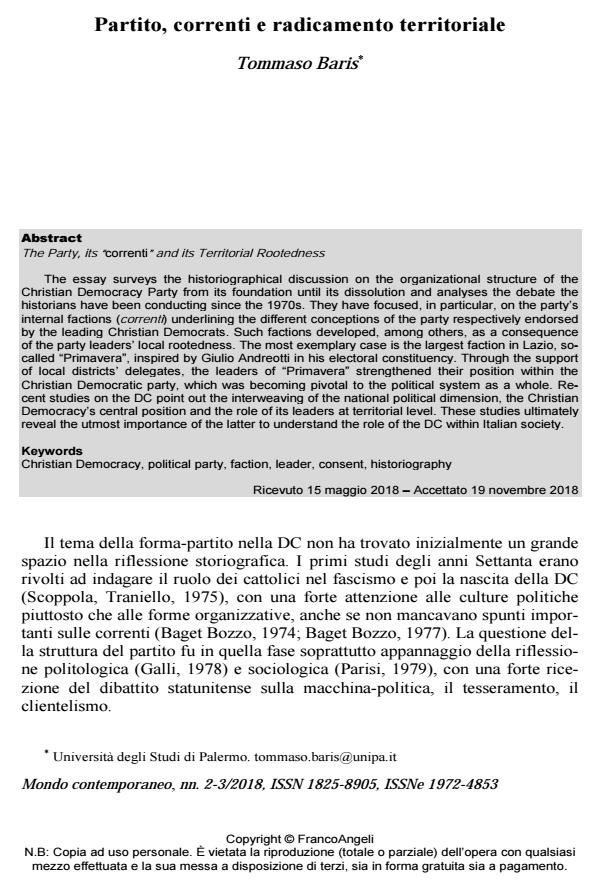The Party, its "correnti" and its Territorial Rootedness
Journal title MONDO CONTEMPORANEO
Author/s Tommaso Baris
Publishing Year 2019 Issue 2018/2-3
Language Italian Pages 13 P. 193-205 File size 245 KB
DOI 10.3280/MON2018-002016
DOI is like a bar code for intellectual property: to have more infomation
click here
Below, you can see the article first page
If you want to buy this article in PDF format, you can do it, following the instructions to buy download credits

FrancoAngeli is member of Publishers International Linking Association, Inc (PILA), a not-for-profit association which run the CrossRef service enabling links to and from online scholarly content.
The essay surveys the historiographical discussion on the organizational structure of the Christian Democracy Party from its foundation until its dissolution and analyses the debate the historians have been conducting since the 1970s. They have focused, in particular, on the party’s internal factions (correnti) underlining the different conceptions of the party respectively endorsed by the leading Christian Democrats. Such factions developed, among others, as a consequence of the party leaders’ local rootedness. The most exemplary case is the largest faction in Lazio, so-called "Primavera", inspired by Giulio Andreotti in his electoral constituency. Through the support of local districts’ delegates, the leaders of "Primavera" strengthened their position within the Christian Democratic party, which was becoming pivotal to the political system as a whole. Recent studies on the DC point out the interweaving of the national political dimension, the Christian Democracy’s central position and the role of its leaders at territorial level. These studies ultimately reveal the utmost importance of the latter to understand the role of the DC within Italian society.
Keywords: Christian Democracy, political party, faction, leader, consent, historiography
Tommaso Baris, Partito, correnti e radicamento territoriale in "MONDO CONTEMPORANEO" 2-3/2018, pp 193-205, DOI: 10.3280/MON2018-002016